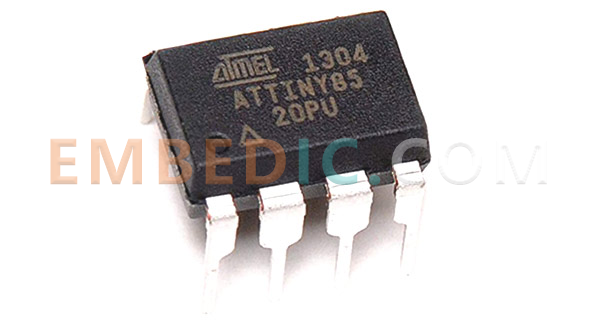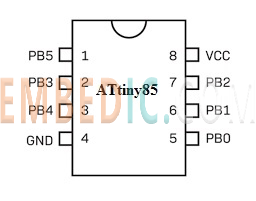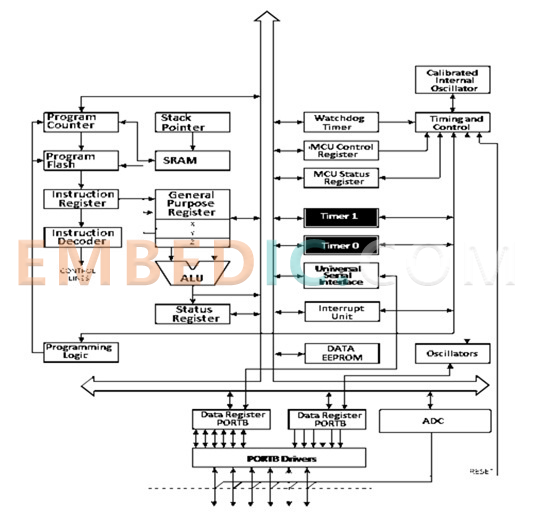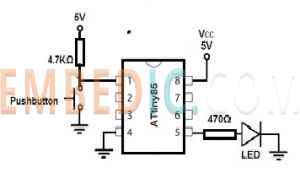The ATtiny85 microcontroller is a powerful yet compact electronic component that has gained popularity in various electronics projects. Developed by Microchip Technology, the ATtiny85 is part of the AVR family of microcontrollers and offers a wide range of features and capabilities. Despite its small size, the ATtiny85 microcontroller packs a punch with its 8-bit RISC architecture, multiple I/O pins, and versatile functionality.
In this article, we will explore the features, benefits, and applications of the ATtiny85 microcontroller, providing valuable insights for electronics enthusiasts, hobbyists, and professionals. Understanding the capabilities and advantages of the ATtiny85 microcontroller will empower you to design and develop innovative electronic projects with enhanced functionality and performance.
The ATtiny85 microcontroller is a small, low-power chip developed by Atmel, which is now part of Microchip Technology. It belongs to the AVR family of microcontrollers and is known for its compact size, low cost, and versatility. The "AT" in the name stands for Atmel, while "tiny" indicates its small form factor.

Features of Attiny85 microcontroller:
Here's the pin configuration of the ATtiny85 microcontroller along with their functionalities:

The price of the ATtiny85 microcontroller can vary depending on various factors such as the supplier, quantity purchased, and any additional components or development boards included in the package. The ATtiny85 was generally available in the range of $1 to $3 per unit when purchased individually. However, prices may vary, and it's advisable to check with suppliers or Embedic for the most up-to-date and accurate pricing information.
The ATtiny85 microcontroller is based on the AVR architecture, specifically the AVR 8-bit RISC (Reduced Instruction Set Computer) architecture. Here are some key features of the ATtiny85 architecture:

8-bit Data Path: The ATtiny85 processes data in 8-bit chunks, allowing it to perform operations on 8-bit binary values.
Harvard Architecture: It follows the Harvard architecture, which means it has separate instruction and data memory spaces. This separation allows simultaneous access to program instructions and data, improving performance.
RISC Design: The ATtiny85 employs a RISC design philosophy, focusing on simplicity and efficiency. It uses a small set of instructions, each taking one clock cycle for execution, resulting in fast and predictable operation.
Flash Memory: The ATtiny85 has built-in Flash memory for program storage. It can be programmed and reprogrammed in-system, enabling flexibility in application development.
SRAM and EEPROM: It features on-chip SRAM (Static Random Access Memory) for temporary data storage and EEPROM (Electrically Erasable Programmable Read-Only Memory) for non-volatile data storage.
Register File: The ATtiny85 has a register file that contains 32 general-purpose 8-bit registers. These registers are used for data manipulation and temporary storage during program execution.
Interrupts: The microcontroller supports interrupts, allowing it to respond to external events and handle them with minimal latency. It has multiple interrupt sources and provides mechanisms for interrupt handling and prioritization.
Peripherals: The ATtiny85 includes various peripherals, such as timers/counters, analog-to-digital converters (ADC), PWM (Pulse Width Modulation) units, and communication interfaces like SPI (Serial Peripheral Interface).
Power Management: The microcontroller incorporates power-saving features to minimize energy consumption. It supports sleep modes, allowing the device to enter low-power states when idle or not actively processing instructions.

|
Model |
Features |
Applications |
Characteristics |
|
ATtiny85 |
8KB Flash, 512B SRAM, 512B EEPROM |
Embedded systems, IoT devices, Wearables |
Low power consumption, compact size, 6 I/O pins |
|
8KB Flash, 512B SRAM, 512B EEPROM |
Battery-powered devices, Low-power designs |
Reduced power supply voltage (1.8V - 5.5V) |
|
|
ATtiny85-20PU |
8KB Flash, 512B SRAM, 512B EEPROM, 20 MHz clock speed |
Robotics, Sensor interfacing |
Higher clock frequency for faster execution |
|
ATtiny85-20SU |
8KB Flash, 512B SRAM, 512B EEPROM, 20 MHz clock speed |
IoT applications, Home automation |
Surface-mount package for compact PCB designs |
|
8KB Flash, 512B SRAM, 512B EEPROM, 20 MHz clock speed |
Consumer electronics, Audio devices |
Extended temperature range (-40°C to 105°C) |
Advantages of ATtiny85 Microcontroller:
Disadvantages of ATtiny85 Microcontroller:
In conclusion, the ATtiny85 microcontroller is a powerful and versatile component that opens up a world of possibilities in electronics projects. With its compact size, low power consumption, and rich feature set, the ATtiny85 offers a cost-effective solution for a wide range of applications. Whether you are a hobbyist, a student, or a professional engineer, exploring the capabilities of the ATtiny85 microcontroller will enable you to create innovative and efficient electronic designs.
Stay updated with the latest advancements in microcontroller technology, explore datasheets and technical documentation, and unleash the potential of the ATtiny85 microcontroller in your projects. Embrace the power and versatility of the ATtiny85 microcontroller, and unlock new levels of creativity and functionality in your electronic designs.
Manufacturer: Texas Instruments
IC DGTL MEDIA PROCESSR 684FCBGA
Product Categories: DSP
Lifecycle:
RoHS:
Manufacturer: Texas Instruments
IC DGTL MEDIA PROCESSR 1031FCBGA
Product Categories: DSP
Lifecycle:
RoHS:
Manufacturer: Texas Instruments
IC DSP FIX/FLOAT POINT 625FCBGA
Product Categories: DSP
Lifecycle:
RoHS:
Manufacturer: Texas Instruments
IC DSP FIX/FLOAT POINT 841FCBGA
Product Categories: DSP
Lifecycle:
RoHS:
Looking forward to your comment
Comment